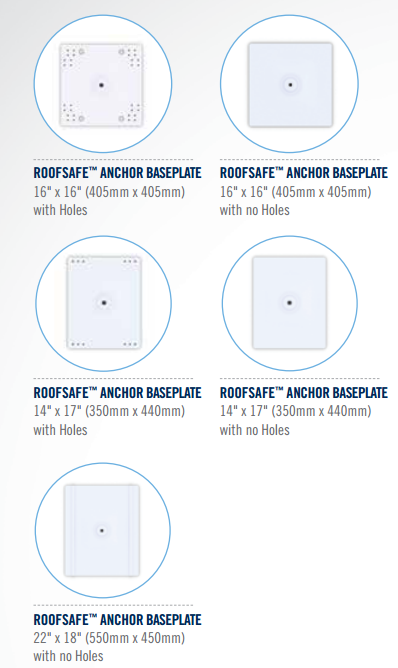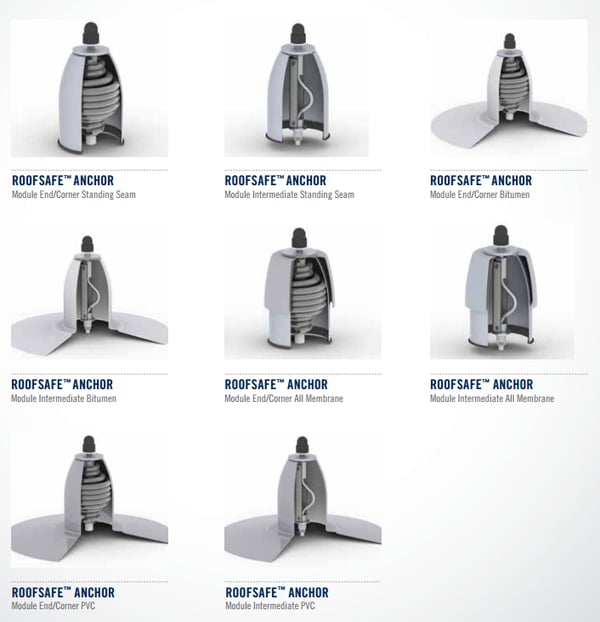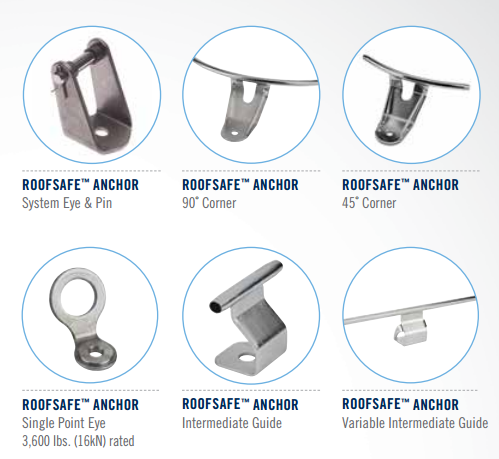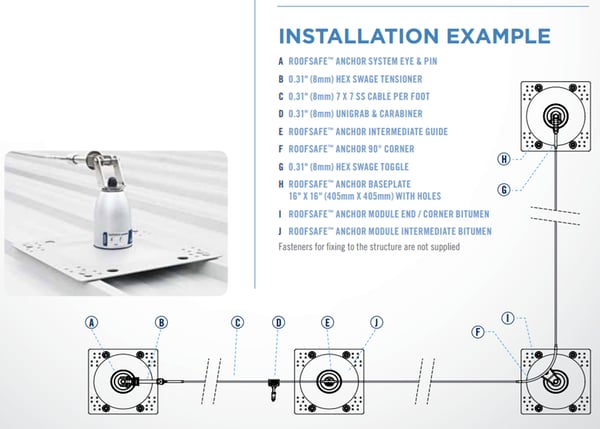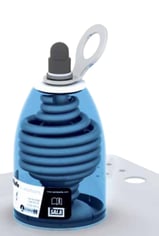 Installing a rooftop horizontal lifeline often eases worries about OSHA compliance, but without exercising proper care, permanently attaching a fall protection system creates the potential for leaks and roof damage. Although the horizontal lifelines offered by various manufacturers look similar, there are significant differences, most notably in anchor post design. Your choice of manufacturer has a direct bearing on the size and number of penetrations required during rooftop lifeline installation. Proper anchor post design can also limit roof damage in the event of a fall. When it comes to lifeline applications for flat and low slope roofs, we recommend Capital Safety’s RoofSafe™ tip-over posts and here’s why….
Installing a rooftop horizontal lifeline often eases worries about OSHA compliance, but without exercising proper care, permanently attaching a fall protection system creates the potential for leaks and roof damage. Although the horizontal lifelines offered by various manufacturers look similar, there are significant differences, most notably in anchor post design. Your choice of manufacturer has a direct bearing on the size and number of penetrations required during rooftop lifeline installation. Proper anchor post design can also limit roof damage in the event of a fall. When it comes to lifeline applications for flat and low slope roofs, we recommend Capital Safety’s RoofSafe™ tip-over posts and here’s why….
The RoofSafe tip-over post utilizes a patented SpiraTech™ Force Management Technology absorbing system. In the event of a fall, the tip-over anchor breaks open and reduces the forces generated on the roof structure to less than 6kN (1,350 lbs)—performance that is unparalleled in the market. Absorbing and dissipating this energy not only keeps workers safe but also limits the possibility of roof from damage in the event of a fall.
The energy absorption associated with tip-over anchor technology also reduces overturning movement on the fasteners by 50%. This means we can reduce the use of baseplate fasteners which in turn lowers the overall number of roof penetrations. Fewer penetrations reduces the risk of leaks and speeds the installation–which saves money.
Thanks to the RoofSafe system’s modular design, we can select the baseplate, module, and top attachment separately to design a horizontal lifeline system suitable for any roof type or membrane application. Let’s take a closer look at how these modular components work together to create a rooftop horizontal lifeline system.
Baseplates
The system’s starting point is a base plate design that incorporates several fixing holes to allow the same plate to be fitted on different roof types and sizes as shown below:
Available End, Corner and Intermediate Anchor Options
With the proper baseplate selected, we then turn to the tip-over anchor module used at end and corner locations of the Horizontal Lifeline. As the picture below suggests, we use different shrouds to match roofing material to prevent leaks. In addition to the modules shown below, the lifeline is supported at regular intervals with Intermediate Anchors. In the unlikely event that the anchor is deployed, the top module is easily removed and and replaced.
Finally, the top of each corner and intermediate tip-over post module is fitted with components to provide complete hands-free movement across the entire span of the Horizontal Lifeline system as shown below:
Below are examples of typical finished installations for flat and low-slope roofs. Although the illustrations show Bitumen and Standing Seam Metal examples, the system is designed for use with any type of roofing material.
Additional Notes:
- The RoofSafe Anchor is designed so a vertical pull test to 1,125 lbs. (5kN) can be applied without affecting anchor integrity. This enables annual testing and verification of its structural integrity, ensuring compliance and peace of mind.
- The maximum end load in a fall is less than 1350 lbs. (6 kN)
- The system’s 316 stainless steel cable offers excellent freedom of movement to navigate corners and building contours.
- The system spans up to 40 ft. (12m) between intermediate supports, minimizing roof penetrations.
- System performance is calculated using custom design software and maintains a minimum safety factor of two for multiple users.
- The RoofSafe™ Anchor and Cable System conforms to EN 795, OSHA, AS/NZ, standards and has been tested to both EN795 Class A and C Standards
When it comes to rooftop fall protection for flat and low slope roofs, a horizontal lifeline with tip-over post technology is your best bet to minimize leaks and roof damage if a fall occurs. To learn more about horizontal lifelines, or to discuss your application, contact the safety experts at Diversified Fall Protection for further assistance.

